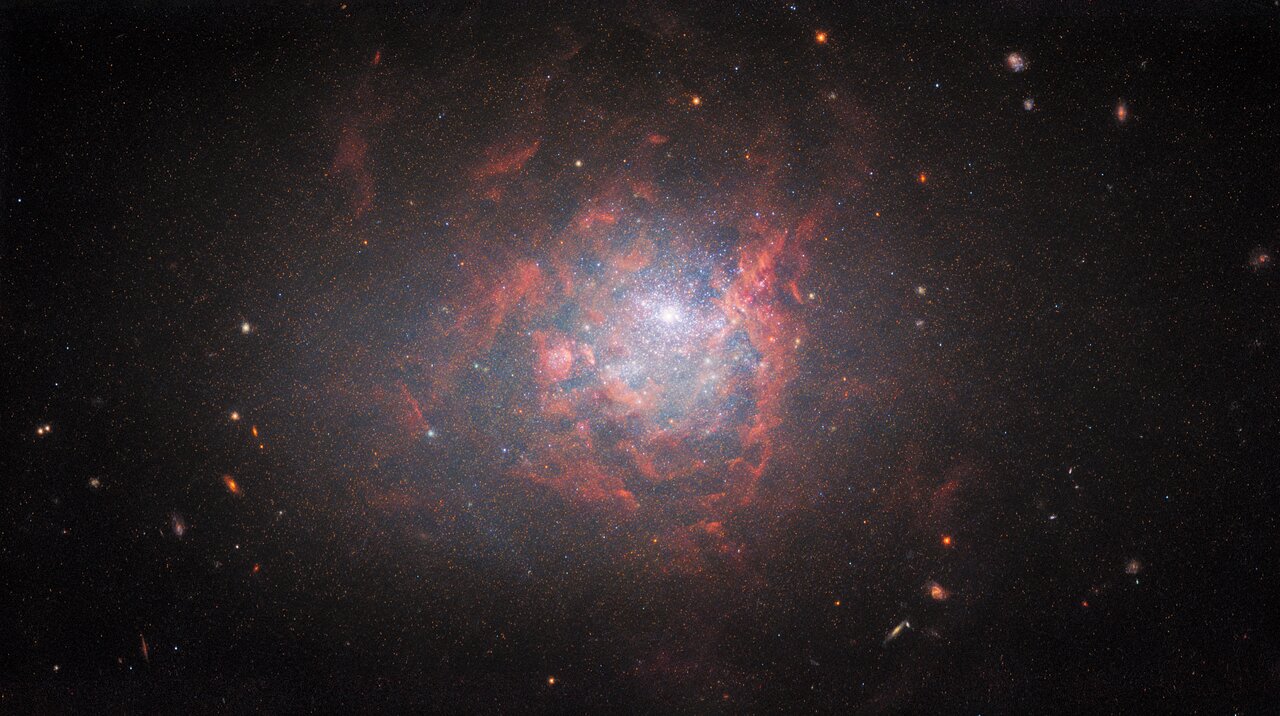Hubble Space Telescope spots an 'oddball' starburst

The Hubble Space Telescope snapped a stellar look at a strange cosmic starburst.
In a new image taken by the Hubble Space Telescope, the dwarf galaxy NGC 1705 shines in a cloud of bright light and red clouds. The tiny, irregularly-shaped galaxy, which lies in the constellation Pictor about 17 million light-years away from Earth, is what the European Space Agency has described as a "cosmic oddball."
Recently, NGC 1705 went through a "starburst" phase, meaning it was experiencing an unusually high rate of star formation.
Video: Dwarf galaxy’s black hole triggers star formation
Irregular dwarf galaxies like this usually have fewer elements than larger galaxies and consist mostly of hydrogen and helium. Because of this they are thought to be similar to the universe's earliest galaxies.
This image was captured by using Hubble's Wide Field Camera 3 to observe a specific light wavelength known as H-alpha, according to a statement from ESA. By looking at this wavelength, astronomers hoped to detect areas where young, energetic stars light up the gas clouds around them with ultraviolet light.
Hubble last peered out at NGC 1705 in 1999 when astronomers used the telescope's camera (at the time, it was the Wide Field Planetary Camera 2) to observe the galaxy's center. These new observations, which use much newer technology on Hubble, can provide more detail and a more complete look at the galaxy.
Get the Space.com Newsletter
Breaking space news, the latest updates on rocket launches, skywatching events and more!
Email Chelsea Gohd at cgohd@space.com or follow her on Twitter @chelsea_gohd. Follow us on Twitter @Spacedotcom and on Facebook.
Join our Space Forums to keep talking space on the latest missions, night sky and more! And if you have a news tip, correction or comment, let us know at: community@space.com.

Chelsea “Foxanne” Gohd joined Space.com in 2018 and is now a Senior Writer, writing about everything from climate change to planetary science and human spaceflight in both articles and on-camera in videos. With a degree in Public Health and biological sciences, Chelsea has written and worked for institutions including the American Museum of Natural History, Scientific American, Discover Magazine Blog, Astronomy Magazine and Live Science. When not writing, editing or filming something space-y, Chelsea "Foxanne" Gohd is writing music and performing as Foxanne, even launching a song to space in 2021 with Inspiration4. You can follow her on Twitter @chelsea_gohd and @foxannemusic.









